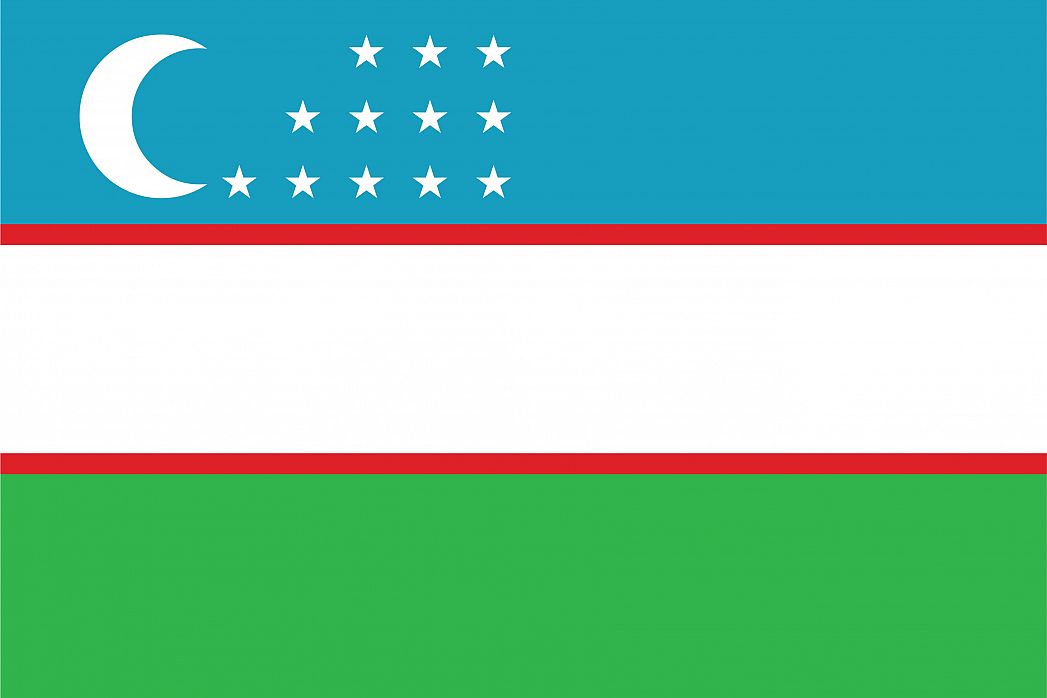The national flag of Uzbekistan comprises of three horizontal stripes of blue, white, and green with fimbriation of red separating the three colors. At the top of the flag stripe is blue with a crescent and twelve stars on the hoist side. The white stripe is in the middle and the bottom stripe is green. The flag was officially adopted on November 18, 1991. The dimensions of the flag are in the ratio of 1:2. In 2010, the country’s president signed into law an amendment to strengthen the protection of national symbols which include the flag and the emblem.
The crescent of the flag represents the religion (Islam). The twelve stars can be interpreted into two meanings: one is they symbolize the twelve months in a year according to the Uzbek calendar. The other interpretation is the stars represent the twelve viloyatlar (districts) in the country. The blue color stands for the sky and water while red is a symbol of life among the people of Uzbekistan. White is a symbol of purity and peace. The green color stands for nature.
The current flag of Uzbekistan was picked from 200 designers submitted in a contest. The flag was approved from entries submitted, and it has been in use ever since. The winning design had a design similar to the flag adopted in 1952, but the five stripes were unequal. The pattern did not have the crescent and the twelve stars.
The Republic of Uzbekistan has only used two flags: the flag used under the Soviet Union and the current flag which was adopted in 1991. The flag used under the Soviet Union had three stripes of blue, white, and red. On the first band was a yellow hammer and a sickle crossing each other with a star on top. The next band was blue in between two thinner white stripes while the last was red. This particular flag was used from 1952 to 1991 when Uzbekistan was under the Soviet Union.
This page was last modified on May 1st, 2018
More on Graphicmaps

Published on 2019-11-06
What is a Trade Embargo?

Published on 2019-11-04
Which Two Countries Used to Have the Same Flag?

Published on 2019-09-16
What Is the Only Two-Sided State Flag?

Published on 2019-09-16
Which Country Flag Looks Like the Texas Flag?

Published on 2019-08-29
Flags That Resemble the US Flag

Published on 2019-08-20
